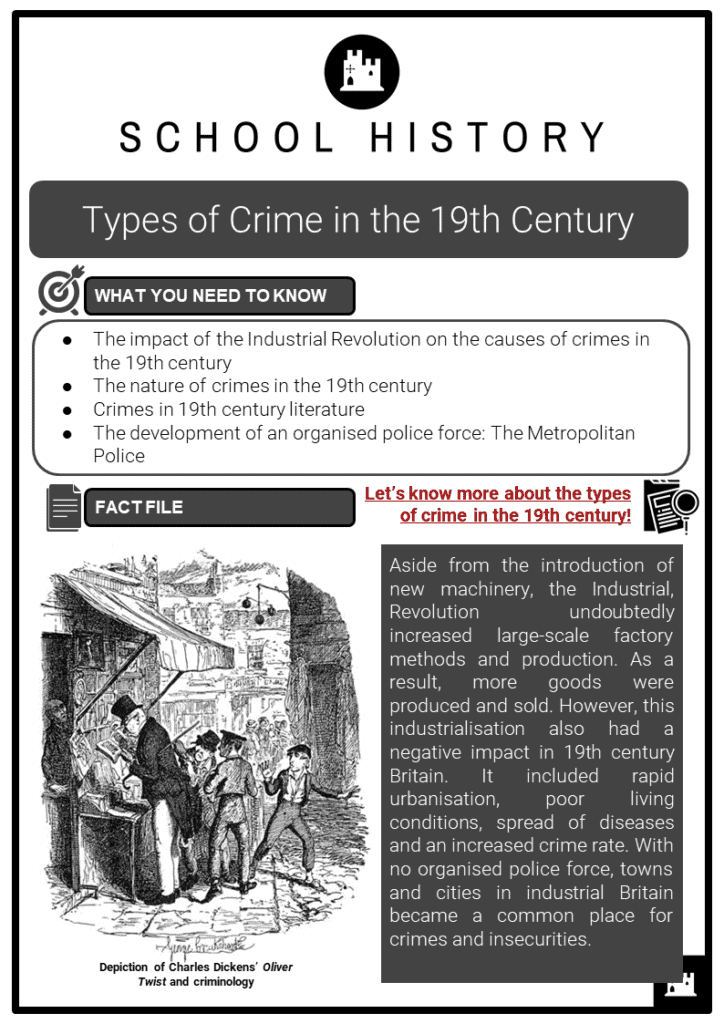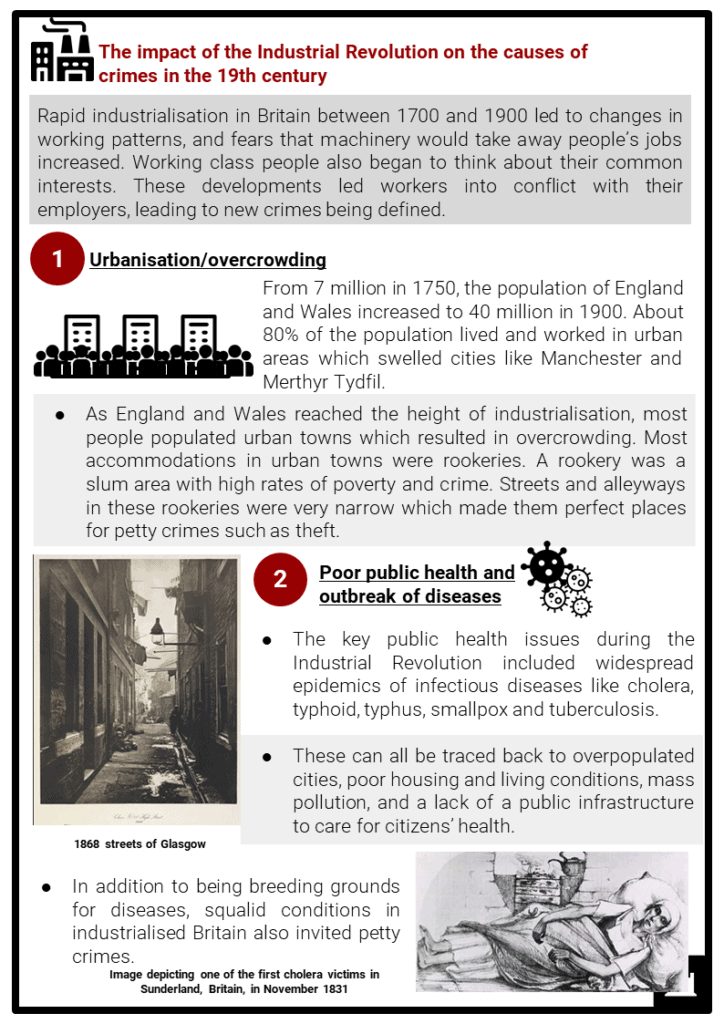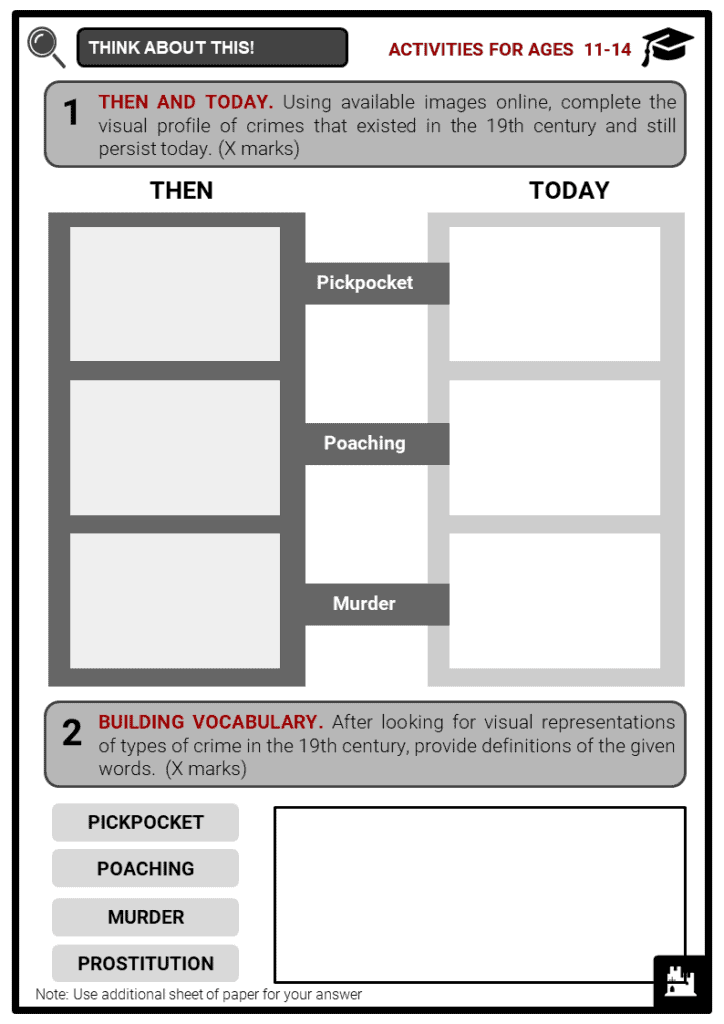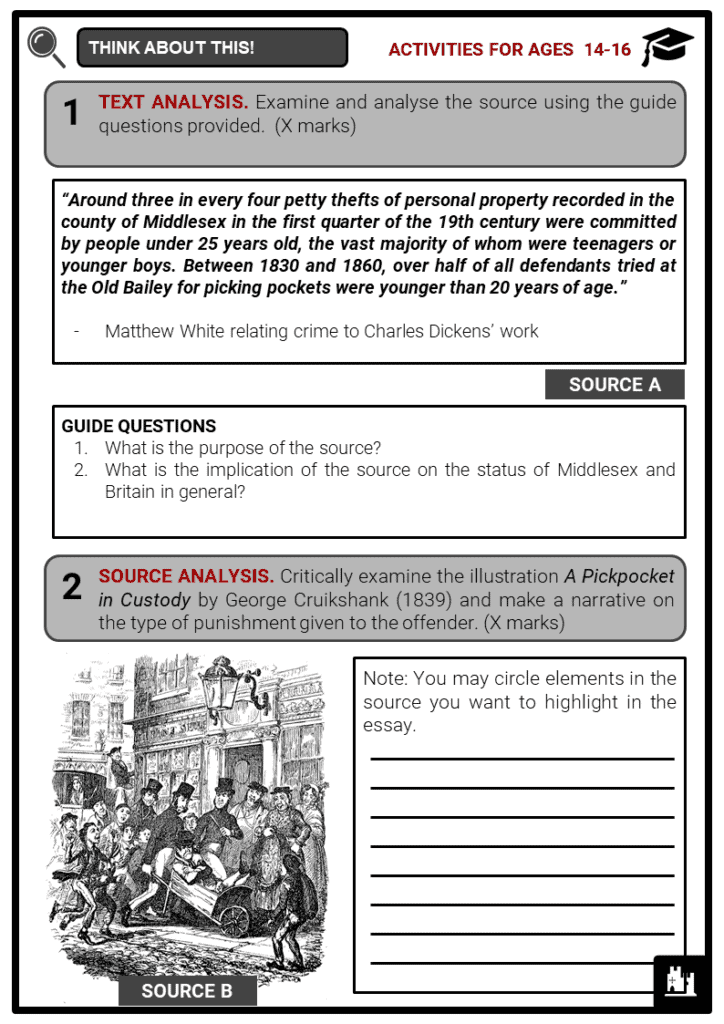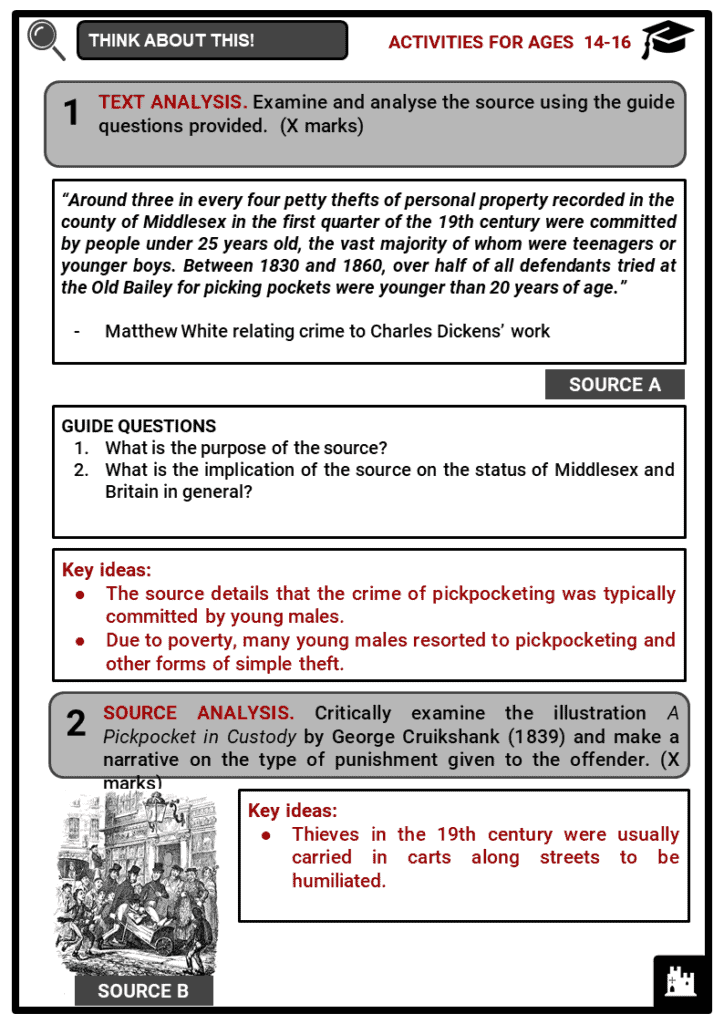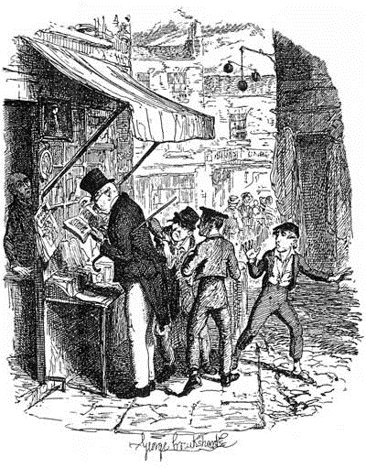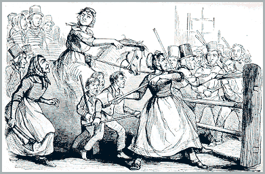Download Types of Crime in the 19th Century Worksheets
Do you want to save dozens of hours in time? Get your evenings and weekends back? Be able to teach Types of Crime in the 19th Century to your students?
Our worksheet bundle includes a fact file and printable worksheets and student activities. Perfect for both the classroom and homeschooling!
Table of Contents
Add a header to begin generating the table of contents
Summary
- The impact of the Industrial Revolution on the causes of crimes in the 19th century
- The nature of crimes in the 19th century
- Crimes in 19th century literature
- The development of an organised police force: The Metropolitan Police
Key Facts And Information
Let’s know more about the types of crime in the 19th century!
- Aside from the introduction of new machinery, the Industrial Revolution undoubtedly increased large-scale factory methods and production. As a result, more goods were produced and sold. However, this industrialisation also had a negative impact in 19th century Britain. It included rapid urbanisation, poor living conditions, spread of diseases and an increased crime rate. With no organised police force, towns and cities in industrial Britain became a common place for crimes and insecurities.
The impact of the Industrial Revolution on the causes of crimes in the 19th century
- Rapid industrialisation in Britain between 1700 and 1900 led to changes in working patterns, and fears that machinery would take away people’s jobs increased. Working class people also began to think about their common interests. These developments led workers into conflict with their employers, leading to new crimes being defined.
Urbanisation/overcrowding
- From 7 million in 1750, the population of England and Wales increased to 40 million in 1900. About 80% of the population lived and worked in urban areas which swelled cities like Manchester and Merthyr Tydfil.
- As England and Wales reached the height of industrialisation, most people populated urban towns which resulted in overcrowding. Most accommodations in urban towns were rookeries. A rookery was a slum area with high rates of poverty and crime. Streets and alleyways in these rookeries were very narrow which made them perfect places for petty crimes such as theft.
Poor public health and outbreak of diseases
- The key public health issues during the Industrial Revolution included widespread epidemics of infectious diseases like cholera, typhoid, typhus, smallpox and tuberculosis.
- These can all be traced back to overpopulated cities, poor housing and living conditions, mass pollution, and a lack of a public infrastructure to care for citizens’ health.
- In addition to being breeding grounds for diseases, squalid conditions in industrialised Britain also invited petty crimes.
Poverty
- Following the Napoleonic Wars and agricultural depression, many were pushed to poverty which led them to commit crimes.
- Poverty also led people to political discontent and protest.
Nature of crimes in the 19th century
PICKPOCKETING
- In addition to stealing and assault, crimes related to the new railway system emerged. The majority of reported crimes were theft. Places such as St. Giles and King Street became known as rookeries where criminal activities became common. There were thimble screwers who stole pocket watches, prop nailers who targeted pins and brooches and drag sneaks who stole goods from carts.
- The most common type of theft in industrial towns and cities was pickpocketing. This type of crime was mostly done by young boys in crowded places. They typically stole purses, watches, pins and brooches. Stealing water through pipelines was a type of theft in squalid cities.
PROSTITUTION
- Although prostitution existed since ancient times, greater exploitation of women in brothels and streets in London became prominent. In 1882, a Select Committee report found that prostitution of young girls in London had become common.
MURDER
- In the 19th century, murder was not a common crime. However, between the 1850s and 1860s, people’s interest in such crime increased after a series of garrottings. This event led to public panic and curiosity over murder trials.
- In the 1880s, the killing and mutilation of women by a serial killer, that the people named Jack the Ripper, increased the public’s interest in murder. The victims were from the East End of London. Known as the ‘evil square mile’, slum areas of Whitechapel, Aldgate and Spitalfields were believed to be the target areas of the killer who is still unidentified today.
POACHING
- In rural areas, many farm labourers were put out of work. Those employed were receiving low wages, while working long hours. Out of poverty, many resorted to poaching.
- It became a problem for the authorities at this time. Poaching had been a fact of life in England for centuries, despite harsh laws against it. In the 18th century, however, the nature of poaching changed as large gangs began to illegally take animals from estates.
- As a result of growing rural poor, many resorted to machine breaking and rioting in the south-east area of England. In south-west Wales, groups of farmers dressed as women assaulted toll gates between 1839 and 1843. These groups particularly resented the Poor Law, tithes and high rents.
RIOTS AND PROTESTS
- In addition to the growth of criminal activities, the Industrial Revolution also brought social and political protests. Due to poverty and poor living conditions, many ordinary people resorted to protests and violence.
- 1812 - 1813: Luddism (Industrial towns in northern England) - Handloom weavers attacked factory machines in protest against new machine-woven cloth
- 1816: Spa Fields Riot (London) - An electoral reform meeting which turned into a violent riot
- 1819: Peterloo Massacre (Manchester) - Another electoral reform meeting which turned into a violent riot, with the death of 11 people and multiple arrests
- 1830 - 1831: Swing Riots (Southeast England) - Attack and arson of farm machines by agricultural labourers due to introduction of new machineries
- 1839 - 1848: Rebecca Riots (Southwest Wales) - Farmers disguised as women attacked toll gates in protest of increased rent and tolls
- 1839 - 1848: Chartism (National) - Series of campaigns for working people’s right to vote and fair elections
Crimes in 19th century literature
- By the 19th century, crime and murder mysteries became a dominant genre in British fiction. Criminality became a literary theme within Britain’s political and social instabilities. Works published by Newgate novels emerged in the 1830s and 1840s. Crimes and criminal behaviours such as theft, bigamy, blackmail and prostitution set in Britain became popular.
- Historical novels by Walter Scott featured Industrial England as the setting for crimes such as murder, riots and arson.
- By the mid-Victorian period, Charles Dickens reflected in his works juvenile crimes like pickpocketing.
Development of an organised police force: The Metropolitan Police
- The work of the Bow Street Runners made it clear that there was a need for the government to take a more active role in law enforcement. In 1829, the Metropolitan Police Force was set up. This was Britain’s first official police force and was established to police London.
- The Metropolitan Police Act replaced the system of watchmen and parish constables. It also made private police forces such as the Bow Street Runners unnecessary.
- Many British people had been against the idea of a government-run police force for a long time because they believed it would be an attack on their personal freedom.
- Many also believed the police would perform a similar role to the army and would use brutal measures to keep people in line.
- The Home Secretary of the time, Robert Peel, tried to reassure people that this would not be the case. As he was keen to show the difference between soldiers and the police, he ensured they wore a very different uniform and did not carry firearms.
- After the passage of the Metropolitan Police Act in 1829, an official police force was created. Initially, they were called Peelers, then Bobbies.
- Compared to red-coated soldiers, the Peelers wore blue tailcoats and top hats. They were armed with a wooden truncheon, rattle and a pair of handcuffs.
- A Peeler should be aged 20 to 27, at least 5’7’’ in height, literate, fit and clear from any wrong-doings. In 1839, the passing of the Police Act enabled the creation of provincial forces similar to the Metropolitan Police.
Image sources:

